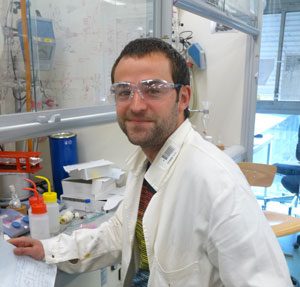We are in a changing era for drug discovery: the growing perception is that basic chemical research will play a greater role in
pharmaceutical development. One current challenge is to develop a new kind of chemistry that yields a screening collection
comprising optimal chiral molecules that increase the probability of success in identifying drug-candidate structures. The
proposed research aims to develop conceptually innovative catalytic methods to rapidly generate, in one single step,
architecturally complex chiral natural-like compounds. Natural products have been selected in evolution and their underlying
structural scaffolds define biologically relevant fractions of chemical space. Consequently, compound libraries inspired by
natural structures deliver lead candidates with a higher hit-rate than conventional lead generation strategies.
We will pursue the proposed research project under the guiding principle that compound development should be driven by
discoveries and innovation in chemical methodology. The goal of the research project is to combine the potential of
asymmetric organocatalysis and gold catalysis, powerful fields of molecule activation, to find cost-effective synthetic
methods for reproducing the rich structural diversity of natural molecules. Since the vast majority of natural products and
drug-like compounds possess heterocyclic moieties, we will focus on preparing diverse heterocyclic compounds, especially
based on the furan unit. The resulting synthetic platform will be used as an ideal starting point for assembling enantiopure
chiral 2,3-furan fused carbocycles, which, along with biological screening carried out in collaboration with a world-wide
recognized pharma-company (Lundbeck A/S), will increase the probability of success in identifying drug-candidate
structures. The multi-cultural nature of this project will greatly contribute to broaden the fellow competencies and will place
him in an excellent position for the next career move.
 This project has received funding from the European Union’s Horizon 2020 research and innovation program under grant agreement 658980
This project has received funding from the European Union’s Horizon 2020 research and innovation program under grant agreement 658980
